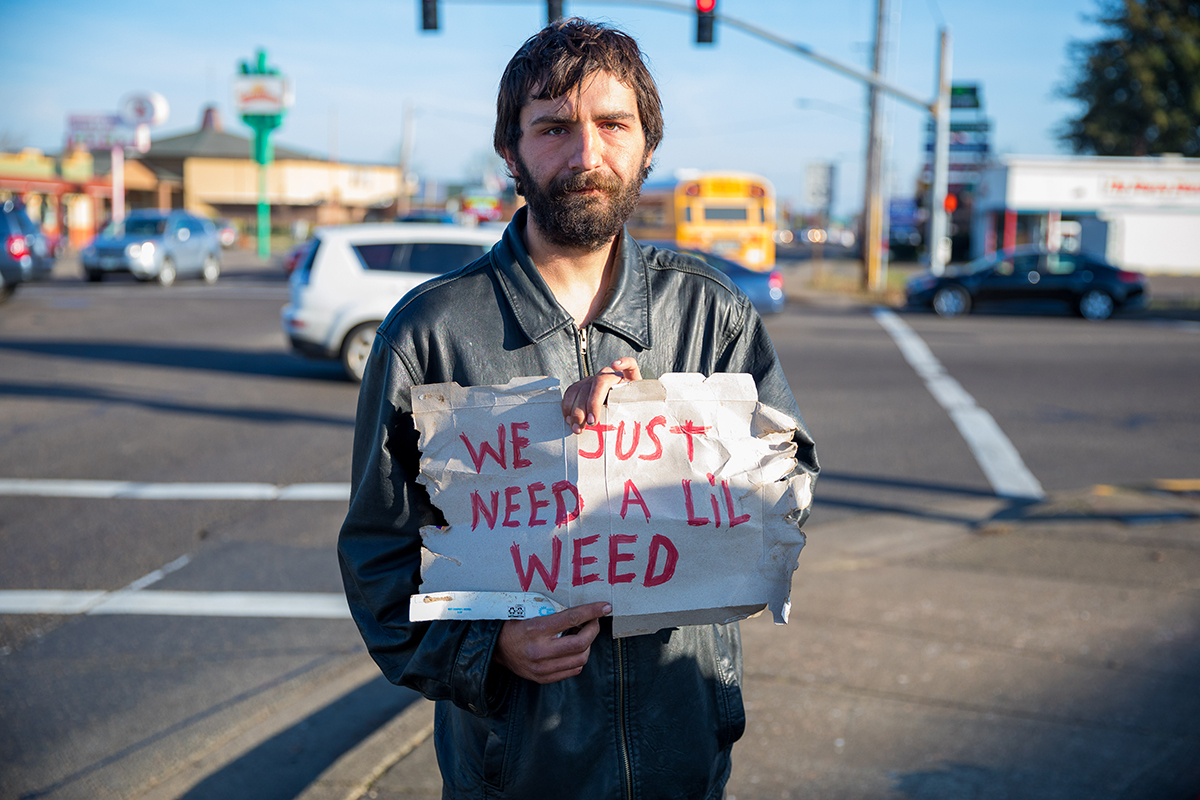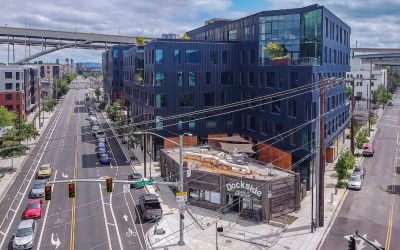Oregon is in the midst of a worsening homelessness crisis, a problem that has plagued the state for years but has become particularly acute in recent times. According to an article published by The Oregonian in 2023, Oregon now ranks third in the nation for homelessness, trailing only New York and Vermont. The state has the highest rate of unaccompanied youth experiencing homelessness and ranks sixth in terms of homelessness among families with children. These grim statistics come despite millions of dollars being poured into various programs to combat homelessness. So, the hard question remains: where is all the money going, and why isn’t it making a visible impact?
As an Oregonian, the sight of tents lining the streets, underpasses, and parks is no longer limited to the larger cities like Portland and Eugene. Smaller communities like Lincoln City, Medford, and Klamath Falls are also grappling with an influx of people experiencing homelessness. In nearly every corner of the state, from urban centers to rural towns, homelessness is now a visible issue. Despite the state's investments, the problem appears to be growing, leaving many wondering why the money doesn’t seem to be solving the issue.
The Current State of Homelessness in Oregon
Oregon’s homeless population has surged dramatically in recent years. According to The Oregonian’s article, the number of people experiencing homelessness in the state increased by 23% between 2020 and 2022, and by another 12% from 2022 to 2023. In total, there are now 20,142 Oregonians without permanent housing, with a staggering 48 people per 10,000 residents experiencing homelessness. Experts believe these numbers are likely an undercount, given the challenges in accurately tracking unhoused populations.
Homelessness among students has also risen sharply over the years. Data from the U.S. Department of Education shows a 58% increase in the number of homeless students in U.S. public schools since 2007, a figure that reflects not just a national trend but one that has profoundly affected Oregon’s communities. Students who lack stable housing face immense challenges, and this is mirrored by the state's inability to find long-term solutions to a crisis that continues to intensify.
In response to this growing crisis, Oregon has committed significant financial resources in recent years. Between the state and local levels, billions of dollars have been spent to combat homelessness. Portland alone spent $286.4 million between the time of its homeless emergency declaration and 2023. Governor Tina Kotek, on her first day in office in 2023, proposed a $155 million homelessness package, aimed at rehousing 1,650 people and preventing homelessness for 8,750 households. Yet, despite these investments, the problem has continued to grow. The crisis persists, and many Oregonians feel the disconnect between the funds spent and the impact seen on the streets.
Kotek’s administration has since achieved 80% of its target to rehouse 650 households experiencing homelessness. Despite this progress, Kotek emphasized that much more work is needed and set new goals for 2024, including a focus on preventing evictions for nearly 12,000 households through rent assistance. However, only 24% of that goal has been met, with 2,853 households stabilized so far. Kotek acknowledged the challenge of limited funds for eviction prevention and promised to prioritize long-term rent assistance in future budgets.
Looking ahead to the 2023-25 biennium, Kotek’s administration aims to maintain 2,400 existing shelter beds, add 1,700 new ones, rehouse 2,700 households, prevent homelessness for 24,000 households, and support the production of 2,800 affordable housing units, among other ambitious goals. However, Kotek remains cautious, recognizing that while progress is being made, Oregon is "not out of the woods" yet in its fight against homelessness.
Jimmy Jones, the director of Mid-Willamette Valley Community Action, notes that Oregon has likely not yet hit the peak of its homelessness crisis. "This is almost all economic,” Jones said, pointing out that the full impact of the pandemic's economic fallout has yet to be felt. Many people who moved into their cars or RVs during the pandemic are not yet accounted for in the state’s homeless count, and it’s likely that even more people will soon be visible on the streets.
The Financial Investments: Where is the Money Going?
Oregon has made significant financial investments in combating homelessness. In 2022, the state legislature approved a $400 million package aimed at addressing homelessness and the housing crisis. Additionally, Oregon receives federal grants, including those from the McKinney-Vento Homeless Assistance Act, aimed at supporting homeless families and individuals. This federal funding complements state and local efforts, creating a multi-pronged approach that should, in theory, be alleviating the crisis.
But despite these financial efforts, the situation on the ground tells a different story. Portland, Gresham, Eugene, and even smaller cities like Bend are seeing a steady rise in homelessness. The federal Point-in-Time (PIT) count conducted in January 2023 found that 65% of Oregon’s homeless population was living on the streets, in their cars, or in other unsheltered locations. The remaining 35% were in shelters. So, where is all the money going, and why isn’t it making a more significant impact?
One major issue is that much of the funding goes toward temporary solutions, such as emergency shelters. These shelters provide immediate relief but do little to address the root causes of homelessness, such as the lack of affordable housing, addiction, and mental health issues. The state has increased its shelter capacity, but the demand is outpacing the supply of beds, and many shelters are full, leaving individuals and families with no place to go.
The Lack of Affordable Housing and the Struggles of Middle-Class Families
The core of Oregon's homelessness crisis lies in its housing market. Oregon has some of the highest housing and rental costs in the country, particularly in urban areas like Portland, Eugene, and Bend. According to The Oregonian, much of the homelessness crisis is fueled by a severe lack of affordable housing. “Where the homelessness crisis is most pervasive—California, Washington, Oregon, and New York—the housing and rental costs are greatest in the country,” Jones said.
Housing construction has not kept pace with demand, and the units that are being built are often out of reach for low-income families. The shortage of affordable housing is one of the primary drivers behind Oregon’s growing homelessness problem. Even with millions of dollars going toward affordable housing development, the rising costs of labor and materials, combined with bureaucratic delays, mean that housing projects take years to complete. In the meantime, more people are losing their homes and finding themselves on the streets.
Middle-class families are also feeling the squeeze. The median home price in Oregon has skyrocketed in recent years, making it increasingly difficult for families to buy homes. As of mid-2023, the average home price in Portland was over $550,000, while the statewide average hovered around $480,000. In smaller towns like Bend and Ashland, housing prices are similarly high, making homeownership an unattainable dream for many. As home prices continue to rise faster than wages, more Oregonians are being priced out of the housing market, leading to an increase in housing insecurity and homelessness.
The crisis is particularly acute in rural areas, where affordable housing is even scarcer. In these communities, the lack of shelter beds means that people experiencing homelessness often have no choice but to live in their cars or in makeshift camps. Rural Oregon, once thought to be insulated from the homelessness crisis, is now facing the same challenges as larger cities, with limited resources to address the growing problem.
Unsheltered Homelessness and the Impact on Families and Youth
Oregon’s homelessness crisis is not just an urban problem. Rural communities are also struggling, largely due to a lack of shelter beds and affordable housing. In some rural areas, families experiencing homelessness are forced to move to larger cities like Portland or Eugene to access services, adding further strain to already overburdened systems.
According to The Oregonian’s article, Oregon has the highest rate of unaccompanied youth homelessness in the country, with the number of homeless youths increasing by 34% between 2022 and 2023. The state also has one of the highest rates of unsheltered family homelessness. Nearly 60% of the state's homeless families are living outdoors, and in the Portland and Eugene areas, almost 75% of unhoused families with children are unsheltered. The lack of stable housing has devastating effects on these families, particularly children, who face significant disruptions in their education and social lives.
While Oregon has consistently reported the highest rate of unsheltered family homelessness, the state has struggled to implement effective solutions. The combination of high housing costs, a lack of affordable shelter beds, and insufficient support services has created a situation where families are falling through the cracks.
Homeless students represent a particularly troubling statistic. Over the past six years, homelessness among students in U.S. public schools has increased by 58%, and Oregon has seen some of the sharpest spikes. These students often find themselves "doubled up" with other families, living in temporary shelters, or, in the worst cases, living in cars or on the streets. The educational disruptions, emotional toll, and social instability caused by homelessness make it incredibly difficult for these students to succeed academically or maintain a sense of normalcy in their lives.
Environmental Factors and Economic Pressures
The rising cost of housing is not the only factor contributing to Oregon’s homelessness crisis. Climate events such as wildfires, floods, and other natural disasters have displaced many families, exacerbating the problem. According to the 2022 report mentioned in The Oregonian article, communities across Oregon have noted an increase in homelessness due to climate-related disasters. Families in coastal areas have lost homes to floods, while those in eastern Oregon have faced heavy snowstorms. The devastating 2020 wildfires destroyed entire communities, leaving thousands of people without homes.
The combination of economic pressures, environmental disasters, and the ongoing housing crisis has created a perfect storm that has left more and more Oregonians without a place to live.
The Way Forward
Despite the grim outlook, experts agree that Oregon's homelessness crisis is not insurmountable. However, addressing the problem will require a more comprehensive approach that goes beyond temporary shelter solutions. Investments in affordable housing need to be ramped up significantly, and those investments need to focus on the most vulnerable populations, including families and unaccompanied youth.
Furthermore, the state needs to improve its coordination of resources. With multiple agencies handling different aspects of the homelessness crisis, there is often a lack of communication and collaboration, which leads to inefficiencies in how funds are used. Greater transparency and accountability are allocated toward homelessness alleviation, including state and federal resources, needs to be more transparent and focused on permanent solutions. Governor Kotek's recent $155 million initiative to rehouse Oregonians is a significant step, but without a comprehensive strategy addressing affordable housing and the long-term challenges of addiction, mental health, and economic pressures, the crisis will continue to worsen. Additionally, Portland’s $286.4 million spent since declaring a homeless emergency exemplifies how funds are being used, yet visible progress remains limited.
While the pandemic and environmental disasters have made the situation worse, the core issue remains Oregon’s lack of affordable housing. Without addressing that, the state’s homelessness crisis will only continue to grow. Oregon cannot afford to wait any longer. The state's middle-class families are increasingly priced out of the housing market, students are struggling with homelessness, and the funds meant to alleviate the crisis have not yet yielded visible results.
While homelessness in Oregon, and across the nation, is often framed in terms of economic and logistical challenges—such as lack of affordable housing, rising rents, and insufficient social services—it also reflects deeper societal and spiritual issues. Homelessness reveals a growing disconnect within communities, where isolation, mental health struggles, and addiction are often symptoms of deeper wounds. It is a reflection of how society views and treats its most vulnerable members. At its core, homelessness is not just about housing; it’s about belonging, purpose, and the basic human need for connection. When individuals are cast out of society, or when social bonds break down, the problem is not merely physical, but a deeper spiritual one. Our collective failure to foster a sense of community and care for one another as a society is evident in the rising numbers of unhoused individuals. Addressing homelessness fully will require not just financial investments, but a reevaluation of societal values, empathy, and a commitment to rebuilding the fabric of human connection and dignity. All the money in the world cannot solve the problem if we fail to address the human spirit and the need for a deeper sense of connection and belonging in our communities.
For more detailed information, you can read our source articles here:
- OPB’s coverage of Governor Kotek's homelessness plan
- Governor of Oregon: Housing and Homelessness Priorities
- Oregon Community Foundation’s research on homelessness













